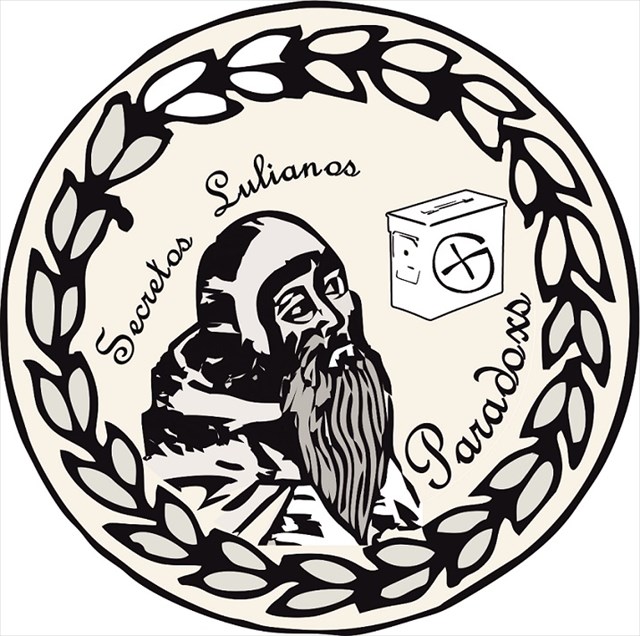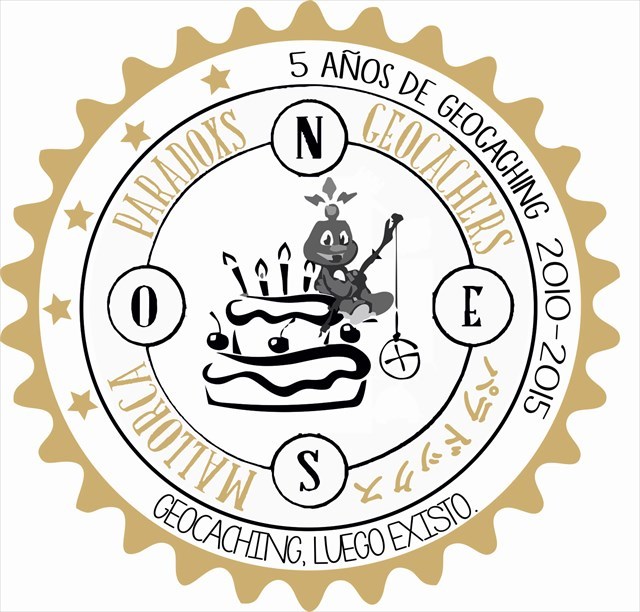Sa Cova des Beat
El Árbol de la Ciencia
La Máquina
El Razonamiento
Ascenso y Descenso del Entendimiento
El Fin de los Secretos
Los Secretos Lulianos es una serie de cachés que te adentrará en una aventura llena de curiosidades, misterios y secretos con la que queremos conseguir dos objetivos:
El primero es hacer memoria sobre el personaje de Ramón Llull, su vida, su obra y su pensamiento.
Además de ser considerado una figura muy importante en el uso de las lenguas, especialmente el de la lengua catalana escrita, también destaca la cantidad de campos en los que realizó aportaciones, destacando la Teología y la Filosofía. En cuanto a su obra y pensamientos, tomamos parte de ellos para representación de los Secretos, simplemente como reseñas y en algunos casos como solución si son interpretados desde los prismas adecuados.
El segundo objetivo es conducir esta aventura a las entrañas del bosque donde Ramón Llull encontró su hogar, en el monasterio de Miramar, entre el 1279 y el 1295. Para ello os conduciremos por algunos rincones significativos y otros tan nimios que son capaces de ocultar los más grandes misterios.
Esta serie es un desafío. Necesitarás varias horas para completarla, asi que no olvides traer suficiente agua y un calzado adecuado. Necesitarás mucha paciencia y tal vez un poco de ingenio. Y necesitarás traer tu propio boli/lápiz.
NO USES LA FUERZA PARA ABRIR LAS CAJAS. Y POR FAVOR DEJA TODO COMO ESTABA. SI NO ABRES LA CAJA Y ESCRIBES EN EL LOGBOOK, NO PUEDES REGISTRAR EL CACHÉ COMO FOUND. ¡NO DEJEIS OBJETOS NI RASTREABLES DENTRO DE LA CAJA!
La Máquina

Ramón Llull murió en el año 1315 durante el regreso del último de sus viajes, que tuvo como destino Túnez. En ese mismo año se publicó el Ars Magna. Su concepción había llegado algunos años antes, concretamente sobre 1275. En esta obra, Llull planteó una de las primeras tesis sobre razonamiento automático; es decir, el desarrollo de una máquina lógica capaz de validar o invalidar argumentos.
Para Llull, el razonamiento podía trasladarse a un proceso secuencial y, por tanto, automatizable; una teoría con la que intentaba demostrar (de una manera objetiva) que los dogmas de la fe cristiana eran correctos (frente a las tesis racionalistas de filósofos como Averroes que, para Llull, eran erróneas). Su idea era que este sistema fuese capaz de refutar teorías y convencer de manera clara, por ejemplo, alguien que no fuese creyente.
¿Y en qué consistía la máquina que diseñó Ramón Llull? Llull desarrolló las bases teóricas de un artilugio llamado Ars Generalis Ultima que se apoyaba en la definición de una serie de ideas simples (llamadas raíces) que se catalogaban en 54 tipos (donde un 33% estaban vinculadas a la doctrina católica). Combinando estas ideas raíces, según su teoría, se podría obtener el conocimiento científico; es decir, combinando sujetos, predicados y teorías teológicas mediante la operación de unas palancas y ruedas, las proposiciones y teorías se movían mediante unas guías para llegar a conclusiones (postura positiva o postura negativa, es decir, una falsedad).
La máquina tenía una base mecánica y se organizaban los sujetos, predicados y teorías teológicas mediante la formación de figuras geométricas consideradas perfectas (círculos, cuadrados y triángulos) usando palancas y manivelas. Con esas raíces y las combinaciones que se podían realizar, Llull postuló que era posible comprobar cualquier teoría y llegar a la conclusión de que era cierta o, por el contrario, era errónea. Entre raíces y combinaciones, se podían llegar a conclusiones teológicas como "la bondad es grande" o "el poder es eterno", los aspectos que preocupaban a Llull.
El Ars Magna era un autómata muy rudimentario, concretamente un autómata finito; aún así se considera el primer intento de utilización de medios lógicos para producir conocimiento y, aunque era una teoría que no podía ir más allá de "los estados que se habían programado", fue una curiosa primera implementación de sistemas relacionados con la inteligencia artificial y, por tanto, de la búsqueda que una máquina fuese capaz de aprender y pensar (o demostrar dogmas de fe).



Beatified Man’s Cave
The Tree of Science
The Machine
The Reasoning
Rise and Fall of Understanding
The End of the Secrets
Lullian Secrets is a series of caches that offers you an adventure full of curiosities, mysteries and secrets, with which we want to achieve two objectives:
The first is to remember the character of Ramón Llull: his life, his work and his thought.
Besides being considered a very important figure in the use of languages - especially in written Catalan - he also stands out for the number of fields in which he made contributions, particularly in theology and philosophy. As for his work and thoughts, we take part of them to represent the Secrets, sometimes just as reviews, and in some cases as a solution if they are interpreted from the right point of view.
The second objective is to lead this adventure into the depths of the forest where Ramón Llull found his home - in the Miramar monastery - between 1279 and 1295. To do this, you'll walk through some significant corners and some other so trivial that they are able to hide the greatest mysteries.
This series is a challenge. You will need several hours to complete it, so do not forget to bring enough water and suitable shoes. You will need a lot of pacience and some wit. And you will need to bring your own pen.
DON'T USE FORCE TO OPEN THE BOXES. AND PLEASE LEAVE EVERYTHING AS YOU FOUND IT FOR THE NEXT GEOCACHER. IF YOU DON'T OPEN THE BOX AND WRITE IN THE LOGSHEET, YOU CAN NOT LOG THE CACHE AS FOUND. NO TRADE OBJECTS NOR TB'S IN THE BOX PLEASE!!
The Machine

Ramón Llull died in 1315 during the return of the last of his travels, whose destination was Tunisia. In the same year he published the Ars Magna. He had come to this conception some years before, about 1275. In this book, Llull proposed one of the first thesis on automatic reasoning; that is, the development of a logical machine able to validate or invalidate arguments.
To Llull, reasoning could become a sequential process and therefore be automated; it was a theory trying to prove (objectively) that the dogmas of the Christian faith were correct (vs. rationalist thesis of philosophers like Averroes, that for Llull were erroneous). His idea was that this system was able to refute theories and convince clearly, for example, someone who was not a believer.
And what was the machine Ramon Llull designed about? Llull developed the theoretical basis of a contraption called Ars Generalis Ultima, which was based on the definition of a series of simple ideas (called roots) that were cataloged in 54 types (where the 33% of them were linked to the Catholic doctrine). Combining these root ideas, according to his theory, one could obtain the scientific knowledge; i.e. combining subjects, predicates and theological theories by operating levers and wheels, the propositions and theories were moved by some guides to reach conclusions (positive or negative stance, that is, a falsehood).
The machine had a mechanical basis, and subjects, predicates and theological theories were organized by forming geometrical figures using levers and cranks; these geometrical figures were considered perfect (circles, squares and triangles) . With these roots and combinations that could be made, Llull postulated that it was possible to verify any theory and to conclude if it was true or, on the contrary, was wrong. Thanks to these roots and combinations, he could reach theological conclusions as "goodness is great" or "power is eternal"; matters of concern to Llull.
The Ars Magna was a very rudimentary automaton, namely a finite automaton; nevertheless it is still considered the first attempt to use logical means to produce knowledge and, although it was a theory that could not go beyond "the states that were scheduled", it was a curious first implementation of systems related to artificial intelligence, and therefore, of the search of a machine that would be able to learn and think (or demonstrate dogmas of faith).



Beatified Man’s Cave
The Tree of Science
The Machine
The Reasoning
Aufstieg und Fall des Verständnisses
Das Ende der Geheimnisse
Lulianos Geheimnisse ist eine Cacheserie, die dir ein Abenteuer voller Merkwürdigkeiten, Mysterien und Geheimnissen bietet, bei denen es um zwei Dinge geht:
Erinnerung an die Person Ramón Llull: sein Leben, seine Arbeit und seine Gedanken.
Abgesehen davon, dass er eine wichtige Rolle beim Gebrauch von Sprachen - inbesondere beim geschriebenen Katalan- gespielt hat, fällt sein Name ebenso in weiteren Bereichen, zu denen er Beiträge geliefert hat (besonders in Religion und Philosophie). Durch seine Arbeit und Gedanken nehmen wir teil an den Geheimnissen, manchmal nur im Überblick, in einigen Fällen als Lösung, wenn sie vom richtigen Standpunkt aus betrachtet werden.
Das zweite Ziel ist es, das Abenteuer in die Tiefe des Waldes zu leiten, wo Ramón Llull zwischen 1279 und 1295 ein zu Hause gefunden hat: im Miramar Kloster. Dafür musst du einige bedeutende Stellen aufsuchen, sowie andere, die wiederum so nichtssagend aussehen, dass sie in der Lage sind, die größten Geheimnisse zu bewahren.
Diese Serie ist eine Herausforderung! Du wirst mehrere Stunden benötigen, vergess daher nicht genügend Wasser und geeignete Schuhe mitzunehmen! Du wirst eine Menge Geduld und Köpfchen benötigen. außerdem brauchst du noch einen Stift.
VERWENDE KEINE GEWALT BEIM ÖFFNEN DER DOSEN! UND HINTERLASSE BITTE ALLES, SO WIE DU ES VORGEFUNDEN HAST, DEM NÄCHSTEN CACHER. WENN DU DIE DOSE NICHT ÖFFNEN UND DICH NICHT INS LOGBUCH EINTRAGEN KANNST, DANN DARFST DU DIESEN CACHE AUCH NICHT ALS FOUND LOGGEN.


